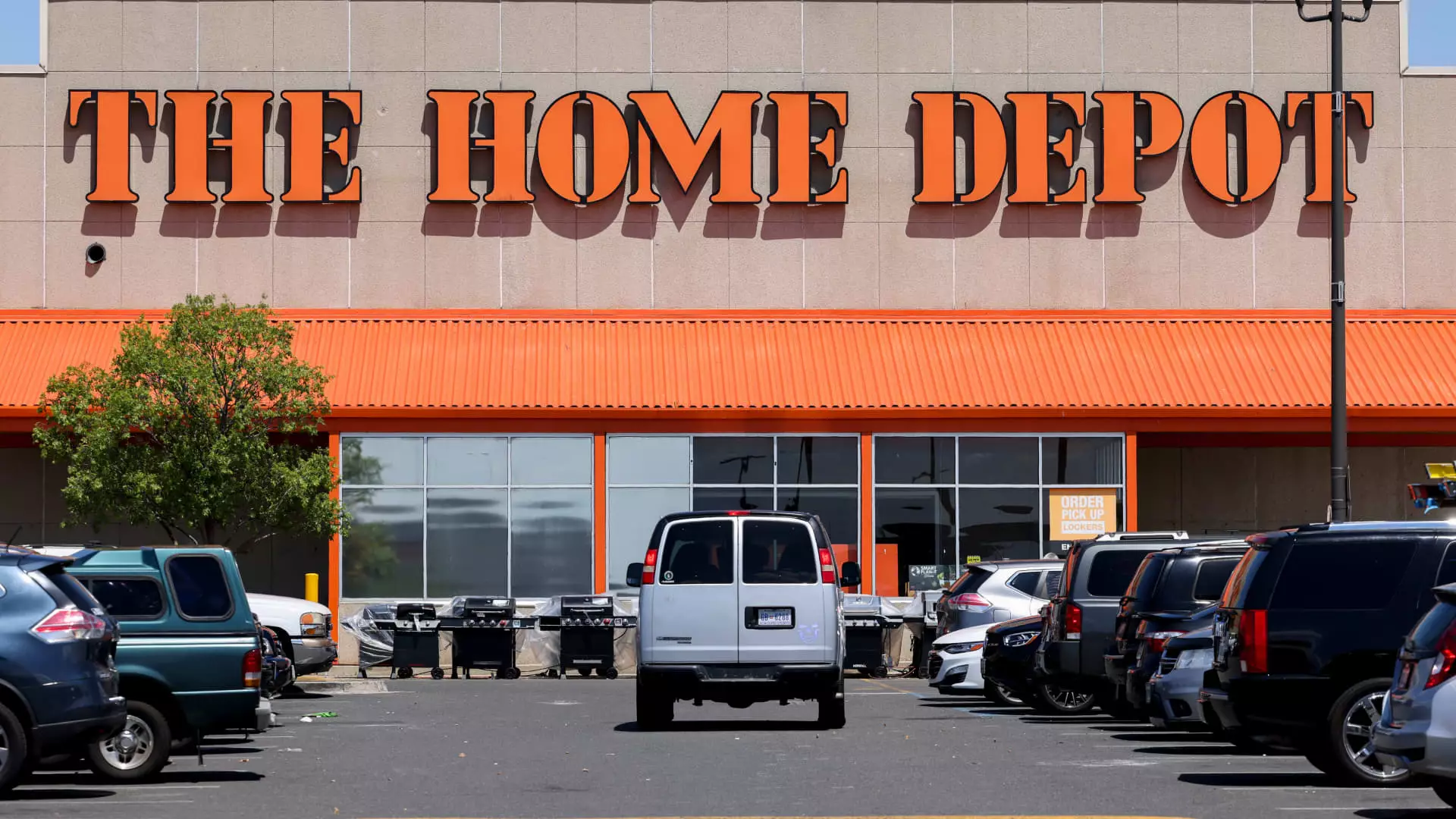In the realm of retail stocks, analysts have recently shifted their focus squarely on Home Depot, heralding it as a compelling investment opportunity. The Telsey Advisory Group, a respected name in retail analysis, upgraded Home Depot’s stock to a buy-equivalent status, driving its price target up from $360 to an impressive $455 per share. This prediction hints at a nearly 14% potential upside from the previous day’s close, signaling robust investor confidence ahead of Home Depot’s impending third-quarter results announcement set for Tuesday.
Despite projecting some “continued softness” in Q3 sales, Telsey’s analysts are optimistic about the company’s growth trajectory, forecasting strong earnings and revenue improvements in 2025. This outlook is predicated on several favorable conditions, such as decreasing mortgage rates, ongoing recovery efforts from recent hurricanes, and less ambitious comparisons to the high demand witnessed during the post-pandemic era. These factors, merged with Home Depot’s solid business fundamentals, position the company to enhance its market share strategically within the home improvement sector. Notably, the analysts highlighted the growth prospects in the professional sector, which caters to more significant and intricate projects, underscoring firsthand market demand.
Thus far, Home Depot’s shares have climbed nearly 17% this year, albeit underperforming the S&P 500 index, which boasts a more than 25% increase in the same timeframe. This discrepancy raises questions about market sentiment, especially given the macroeconomic backdrop characterized by resilience and moderating inflation. The Federal Reserve’s recent monetary policy adjustments, particularly the latest interest rate cut, are expected to usher in more affordable mortgage rates, further strengthens the housing market—an essential domain for Home Depot’s clientele of homeowners and builders alike.
Optimism around Home Depot is gaining momentum in light of these developments. Renowned market commentator Jim Cramer has advocated for Home Depot, suggesting that it stands poised to benefit from the Federal Reserve’s easing policies. However, the endemic issue of high bond yields could dampen enthusiasm for shorter-term investment returns, as they impede mortgage affordability. Cramer highlighted this lag between monetary policy adjustments and noticeable improvements in the housing market, noting the probable six-to-nine-month wait before any significant changes materialize.
Investors are encouraged to maintain their positions in Home Depot, despite the anticipation of less-than-stellar quarterly earnings reports in the near term. Cramer emphasized that the forward-looking guidance would hold more significance than the actual results, implying that the long-term trajectory remains promising.
Challenges Facing Best Buy
Contrasting sharply with Home Depot’s positive outlook is Best Buy, which finds itself under scrutiny following a downgrade by Citi. The firm reduced its price target for Best Buy from $115 to $109 while retaining a buy rating. Citi’s analysts pointed to the impending challenges posed by potential tariffs on imports from China, particularly in the technology sector. Given that a sizable portion of Best Buy’s inventory originates from Chinese manufacturers, these tariffs could create a significant headwind for the electronics retailer, adding uncertainty to its future performance.
Yet, there’s a silver lining. Citi acknowledged the ongoing artificial intelligence-driven tech replacement cycle, which remains steadfast and poised to bolster earnings through consumers’ eager demand for upgraded smartphones and computers. This trend places Best Buy in a favorable position, as it becomes a go-to destination for customers seeking the latest technology.
Best Buy’s stock has recently experienced a dip of approximately 2.5%, reflective of the broader market sentiment ahead of the elections—during which investors tread cautiously. Many have adjusted their holdings preemptively to secure profits following an optimistic rally spurred by central bank interest rate cuts.
Despite Citi’s reservations about potential tariff impacts, the expectation for Best Buy remains cautiously optimistic. The anticipated benefits from falling interest rates may catalyze an increase in consumer spending, particularly on larger ticket items like appliances and electronics—vital to Best Buy’s inventory. Similar dynamics could benefit both Home Depot and Best Buy should the housing market reignite, leading to increased patronage.
As we await Best Buy’s forthcoming quarterly results announcement on November 26, it becomes increasingly apparent that strategic positioning and market conditions will dictate the way forward for both retail giants. With Home Depot demonstrating resilience amid economic fluctuations and Best Buy navigating potential tariffs and changing tech landscapes, investors must carefully assess their positions in light of evolving market narratives.
Both Home Depot and Best Buy exhibit characteristics typical of their respective trajectories—one rising through favorable economic indicators, while the other cautiously manoeuvers through geopolitical challenges. For investors, understanding these complexities will prove pivotal in making informed decisions moving forward.

